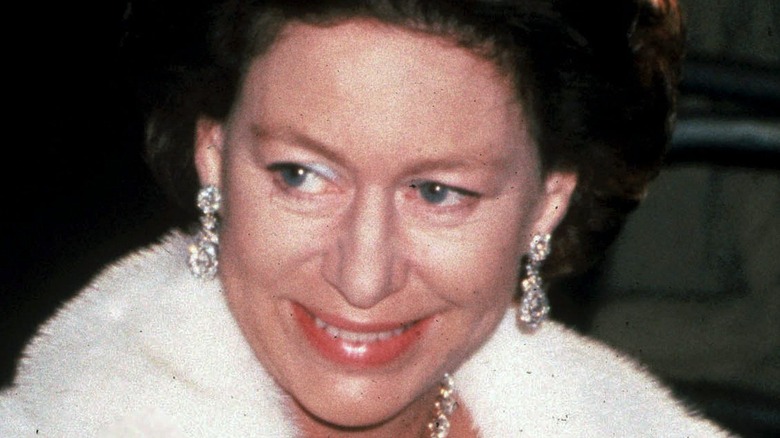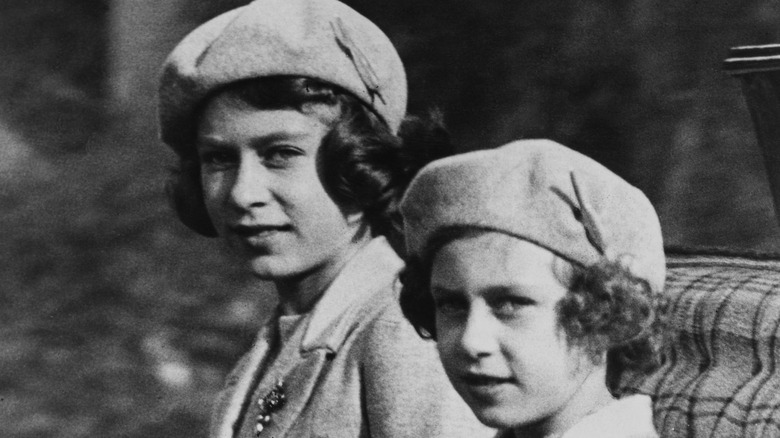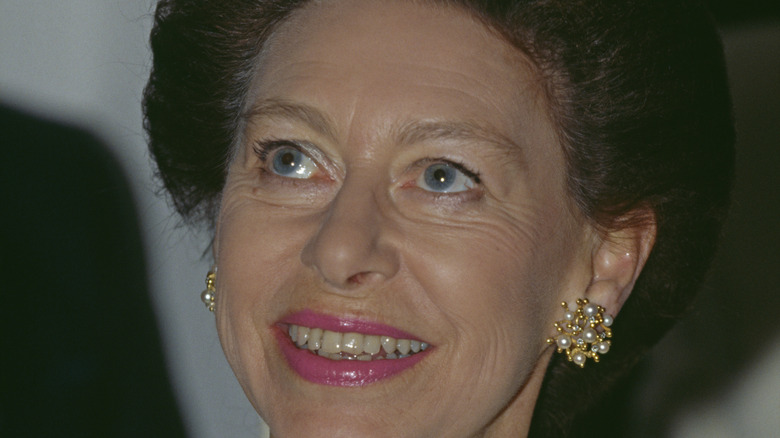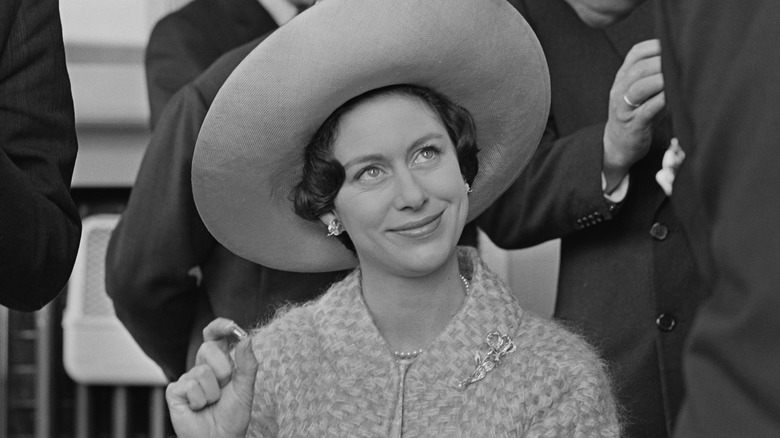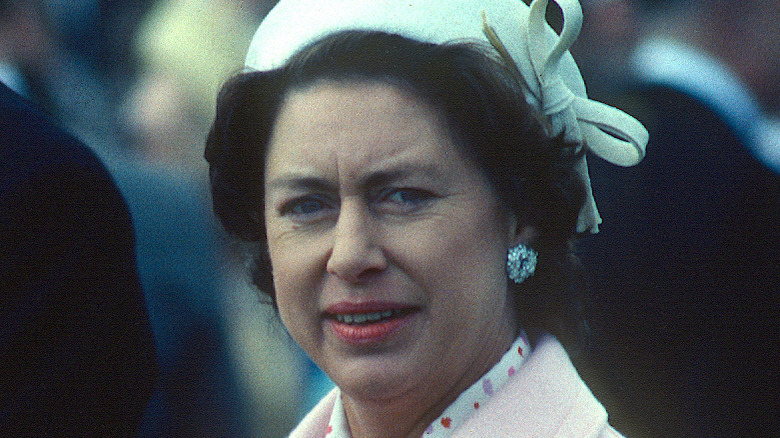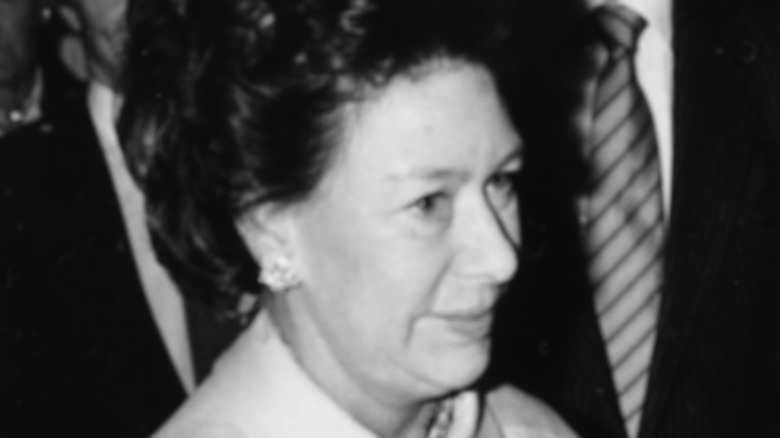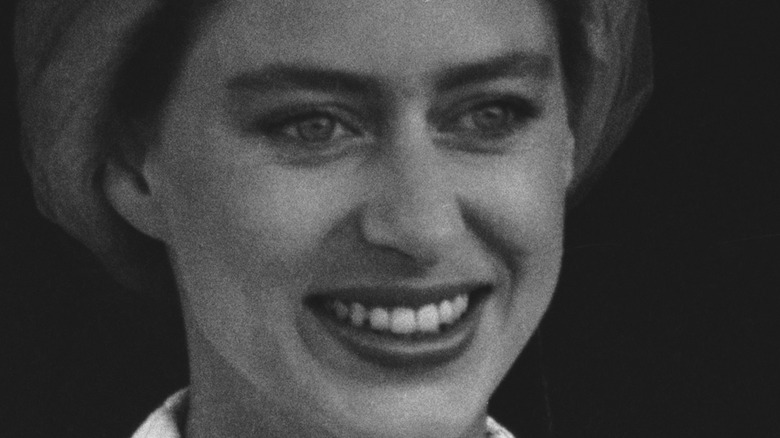Princess Margaret's Mental Health Struggles Explained
Correction 2/9/23: An earlier version of this article misstated Princess Margaret's age at the time of King George VI's death. She was 21, not 23.
Princess Margaret was the younger sister of Queen Elizabeth II. Like her sister, Margaret grew up in a bit of a bubble that very few people on this planet can understand. Though she had more freedom than Elizabeth did as the future monarch, Margaret wasn't able to make choices for herself in some of the most important ways, such as when she was compelled to call off her engagement to Group Captain Peter Townsend or give up her standing as a member of the royal family (via BBC News).
Margaret died in February 2002 following years of mental and physical health problems and conditions. As reported by People, she was set back by a number of strokes. Her divorce from Tony Armstrong-Jones in the mid-1970s was described as a turning point for Margaret health-wise and in terms of how she was received by the public (via PBS).
As Margaret died in 2002 and didn't leave behind many interviews in which she directly addressed her mental health, it's difficult to know exactly what impacted her and what did not and how she moved through life in her final decades. Here is a look at Princess Margaret's mental health struggles and the conditions attributed to being behind them.
The truth about Princess Margaret's suicide attempt
It's hard to separate gossip from truth. The Irish Times claims that, in the end, Princess Margaret's marriage was cruel, and her husband, Antony Armstrong-Jones, took to spying on her through a "hole in the wall." Helena Bonham Carter who plays Princess Margaret in The Crown is convinced that the princess did attempt suicide. "I think she suffered from real depression" Bonham Carter reflected to The Hollywood Reporter, "I think her friends ... confirmed that. She had a total breakdown when her marriage went bust, and I think she took the sleeping pills ... What she wanted was the pain to stop." Princess Margaret never admitted to it. She told The Telegraph, "I was so exhausted because of everything that all I wanted to do was sleep ... and I did, right through to the following afternoon.'"
Whatever the case, the princess was not just a victim. She also actively sought help when she needed it. In the aftermath of her divorce and subsequent nervous breakdown, Princess Margret sought out and received psychological counseling (via The Guardian). And while her last years were not, if you believe The Guardian, kind (Princess Margaret is reported to have become "confused and reclusive" before her death), neither can you call her life a tragedy. If Biographer Theo Aronson, is to be believed, Princess Margaret told the French filmmaker, Jean Cocteau, "Disobedience is my joy.” The princess disobeyed gloriously.
If you or anyone you know is having suicidal thoughts, please call the National Suicide Prevention Lifeline at 1-800-273-TALK (8255).
Princess Margaret lost her dad at an early age
Princess Margaret and her sister Queen Elizabeth experienced a profound loss at a relatively early age when their father, King George VI, died from lung cancer. Margaret was only 21 years old when George passed away, and in the years that followed, many of her highs and lows mirrored those of her dearly loved father's.
King George VI died in his sleep following a battle against lung cancer. As History.com notes, the monarch's unexpected passing had an enormous impact on his oldest daughter, Elizabeth, who was named queen at the age of 25. His death also impacted Margaret's life, as she struggled with her role as the second born or "spare" as her great-nephew Prince Harry infamously put it in his 2023 memoir.
Royal author Andrew Morton told Fox News that the role didn't come easily to the younger sister. As he put it, "Margaret was faced with struggles as a spare ... The challenge is to find a relevant and meaningful role in life. That way you are not seen as someone standing in the shadow of somebody else, someone who is going to be king or queen. It's difficult."
Princess Margaret was devastated when she couldn't marry Peter Townsend
Princess Margaret's place in the British royal family came with plenty of privileges that only a handful of people have truly enjoyed, but it also came with setbacks and denials that were difficult for her to bear. In 1944, Margaret met and fell in love with Group Captain Peter Townsend, who worked for her father. Townsend was also a married father of two, though that didn't seem to slow down the attraction the pair shared. Ultimately, Townsend and his wife divorced in 1952 and proposed to Margaret a year later (via Biography).
Unfortunately, Margaret's royal family wasn't supportive of the relationship. Queen Elizabeth told her younger sister that she and Townsend could not marry because he was a divorcee and the marriage would have violated the Royal Marriages Act of 1772 (per Biography). As a result, she would have had to give up her status in the line of succession within the family. Margaret eventually ended her engagement to Townsend, choosing to retain her status within the royal family.
At the time, Margaret explained in part that Townsend's divorce was part of her reasoning as well. She said, "But, mindful of the Church's teaching that Christian marriage is indissoluble, and conscious of my duty to the Commonwealth, I have resolved to put these considerations before any others" (via BBC News).
Princess Margaret drank vodka each morning
Princess Margaret eventually met photographer Tony Armstrong-Jones in 1958 when they both attended the same party, though nothing serious took off between the pair until months later. Even then, they kept their relationship a secret; author Anne de Courcy tells Town & Country that they would often meet up at the photographer's studio.
The two made things official in May 1960 when they married at Westminster Abbey. They had two children together, though the pair didn't exactly enjoy a completely happy home life. As Biography has noted, both Margaret and Armstrong-Jones were fond of drinking, and Margaret often began her day by drinking vodka in bed, an act that eventually contributed to the many physical health problems she faced as she aged.
Ultimately, Margaret and Armstrong-Jones parted ways after each engaged in extra-marital affairs, Margaret most notably with Roderic Llewellyn, who was 18 years younger than her.
The public turned on Princess Margaret after her divorce
Despite the fact that both Princess Margaret and her ex-husband Tony Armstrong-Jones both had affairs while they were married, it seemed that the British public turned on Margaret following their divorce. In an excerpt from Ben Pimlott's 1996 book "The Queen," the author explains that the public seemed to feel betrayed by the end of the marriage.
He explains that the announcement of the divorce "destroyed" the image that the royal family had cultivated for so long — that they could do no wrong or that they exist on a higher plane than the general populace. As he writes, "Princess Margaret was somebody people had grown up with. Although marriage break-ups were, by now, ten-a-penny in the outside world, the revelation that the perfect family suffered from the same tensions as many imperfect ones came as a shock" (via PBS).
Pimlott also writes that Margaret began to encounter negativity from the very media and press that had so often celebrated the choices she'd previously made. Much as they would eventually aggressively pursue future generations, tabloid journalists began to follow Margaret and report on each man she was seen within any context. This did little to improve her standing with the public. As Margaret herself later said, "When my sister and I were growing up, she was made out to be the goody-goody one. That was boring, so the Press tried to make out I was wicked as hell."
Princess Margaret's health began to decline after her divorce
Princess Margaret began to experience a significant mental and physical decline following her divorce from Tony Armstrong-Jones. It has been reported that Margaret suffered a breakdown in the 1970s, with some outlets writing that she attempted to take her own life (via Time). As The Telegraph has noted, though the royal family denied that Margaret attempted to die by suicide, others weren't so sure.
Despite denials from family members and her friends, author Caroline Davies told the outlet, "At the height of her distress, and unable to sleep, she took a handful of Mogadon tablets and anxious staff found they were unable to wake her." Margaret herself told The Telegraph that she just wanted to sleep soundly, and to that end the tablets did their job.
Margaret also contended with a number of physical ailments, including three strokes and a lung biopsy. The Guardian notes that her last stroke caused problems with both the left side of her body and her sight; she was said to have grown reclusive and reluctant to leave her home.
The royal family allegedly ignored Princess Margaret's depression
Many people believe that though she was never formally diagnosed, Princess Margaret suffered from depression. And like other members of the royal family who have also struggled with their mental health in the face of huge amounts of public attention and expectations, it seems that Margaret was largely left on her own.
In his book "Elizabeth & Margaret: The Intimate World of the Windsor Sisters," royal author Andrew Morton bluntly states, "Let's face it, Margaret had depression and in the Royal Family you are not allowed to be depressed" (via Woman and Home). Morton also claims that this was backed up by a friend of Margaret's, who he says explained to him, "No one is allowed to be ill in that family. But the family's lack of understanding is making the princess's moods even blacker."
It's also been said that this treatment went all the way to the top. Woman and Home report that when a concerned friend told Queen Elizabeth that Margaret had threatened to jump out of her bedroom window, the queen simply said, "Her bedroom is on the ground floor."
